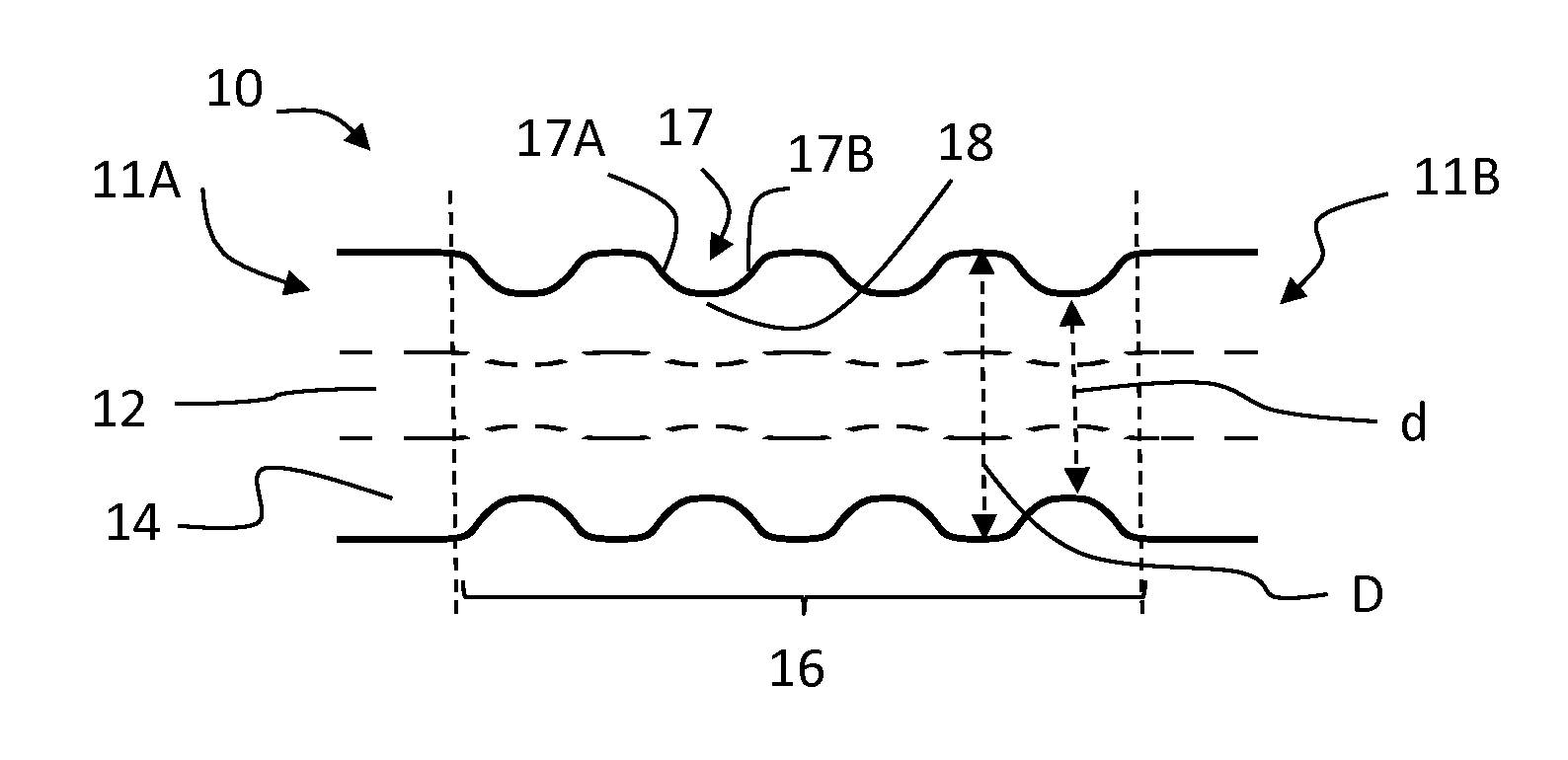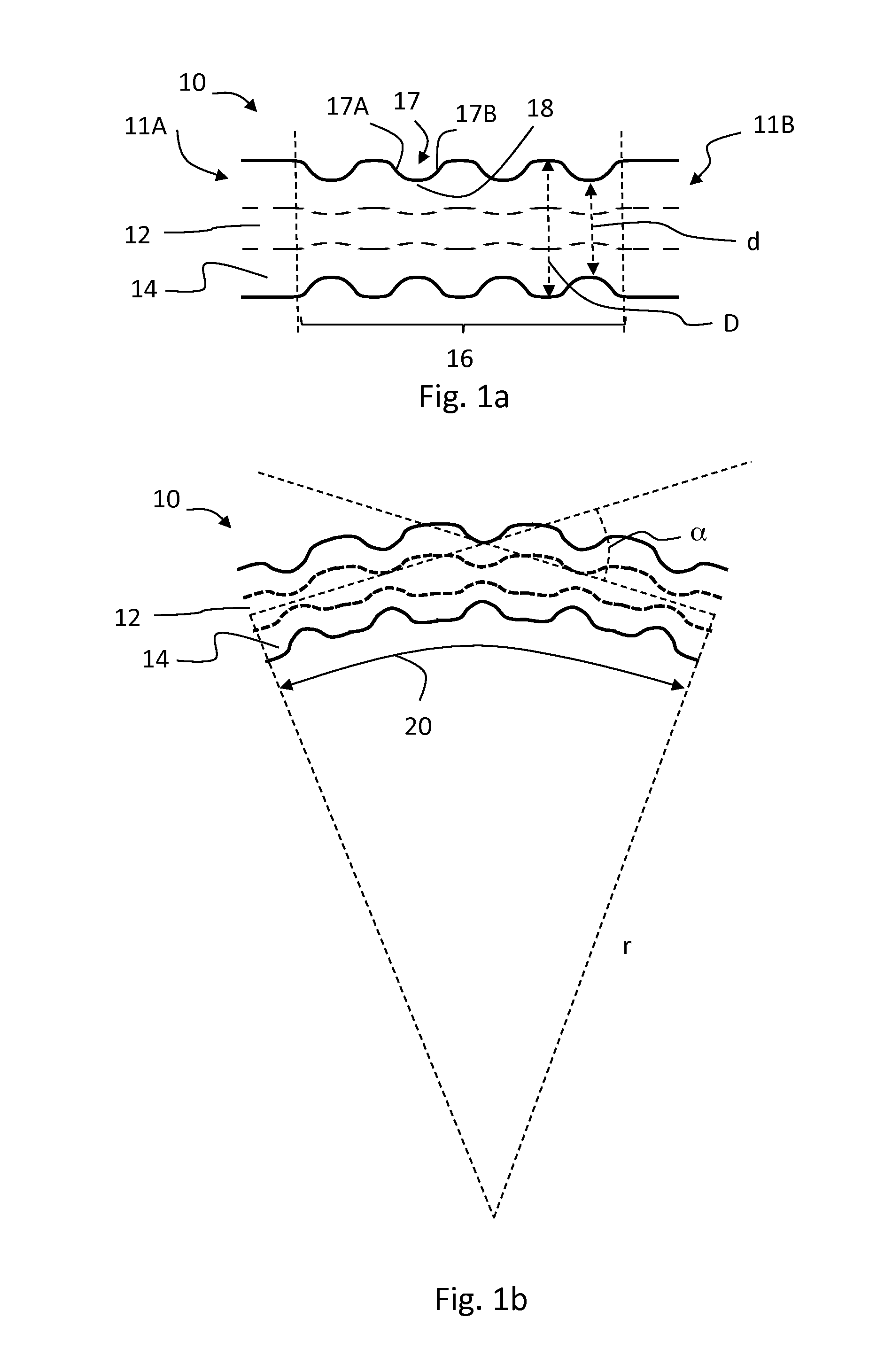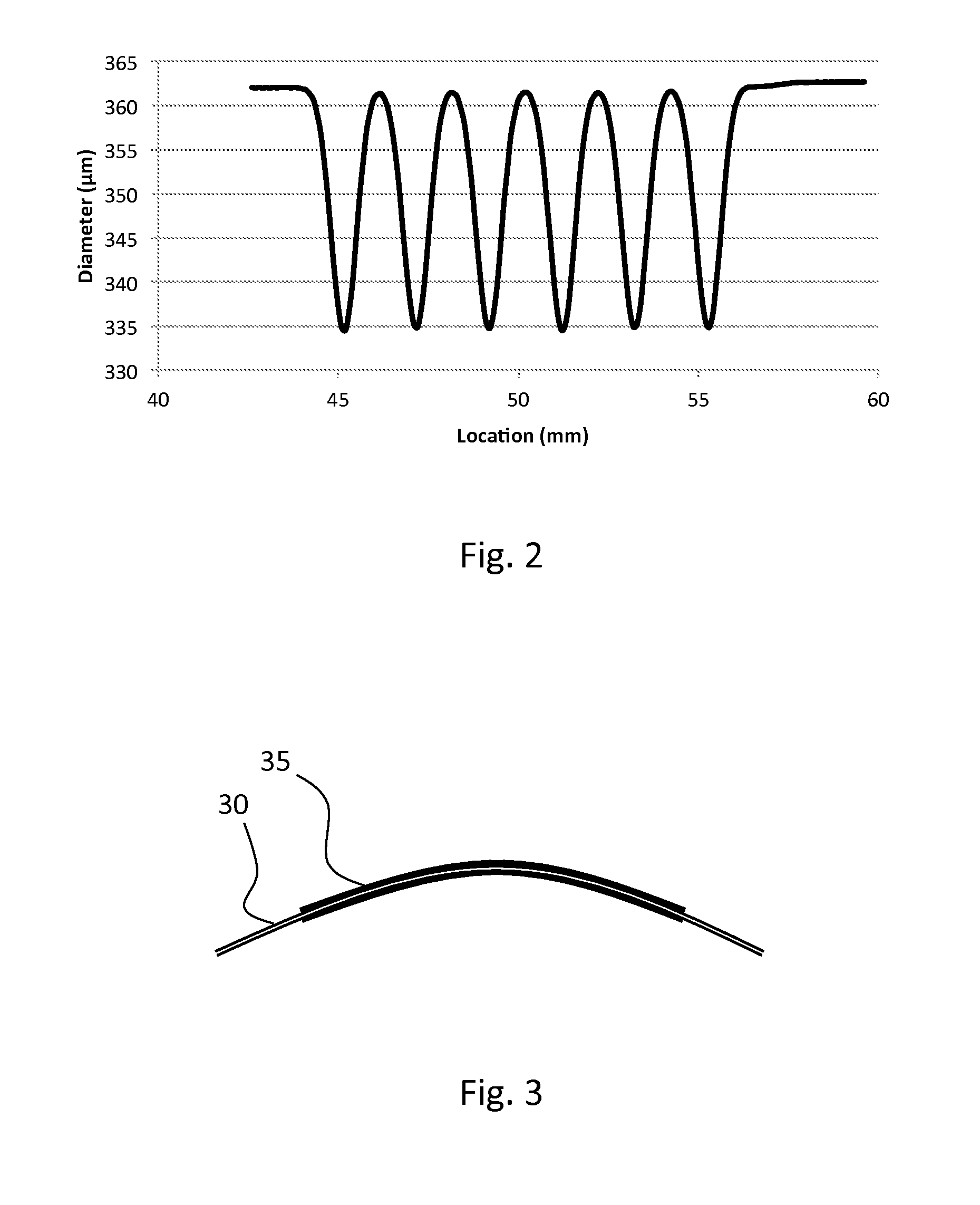Fiber optic mode scrambler and a method of manufacturing thereof
- Summary
- Abstract
- Description
- Claims
- Application Information
AI Technical Summary
Benefits of technology
Problems solved by technology
Method used
Image
Examples
Embodiment Construction
Definitions
[0037]The term “multi-mode optical fiber” refers to an optical fiber capable of carrying simultaneously a plurality of optical modes to be at least partially scrambled by means of the invention. Thus, the multi-mode fiber is understood here in the conventional sense of having a core that supports multiple optical modes. In typical end-user applications, the multi-mode optical fiber according to the invention is coupled to a multi-mode optical source, such as a fiber-laser source. The number of modes guided by a core of a multi-mode fiber can be hundreds. The best performance for the mode scrambler component of the invention is achieved with fibers having a strongly multi-mode character, where the optical mode spacing in propagation constant space is relatively dense, preferably less than 1000 m−1.
[0038]A “narrowing” means the combination of two tapers in the optical fiber, namely a down-taper gradually (over a down-taper length) reducing the diameter of the fiber from the...
PUM
| Property | Measurement | Unit |
|---|---|---|
| Fraction | aaaaa | aaaaa |
| Angle | aaaaa | aaaaa |
| Angle | aaaaa | aaaaa |
Abstract
Description
Claims
Application Information
 Login to View More
Login to View More - R&D
- Intellectual Property
- Life Sciences
- Materials
- Tech Scout
- Unparalleled Data Quality
- Higher Quality Content
- 60% Fewer Hallucinations
Browse by: Latest US Patents, China's latest patents, Technical Efficacy Thesaurus, Application Domain, Technology Topic, Popular Technical Reports.
© 2025 PatSnap. All rights reserved.Legal|Privacy policy|Modern Slavery Act Transparency Statement|Sitemap|About US| Contact US: help@patsnap.com



